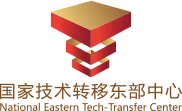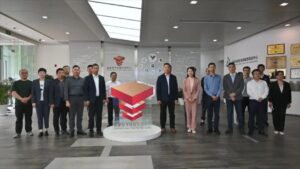Jizu Ni, General Manager, Shanghai Bay Valley Intellectual Property Agency|Man
INTRODUCTION.In recent years, with the rapid development of high and new technologies such as information, biology, materials and energy, as well as their industries, the world economic landscape has undergone major changes, and scientific and technological innovation has increasingly become a decisive force in economic and social development. In the tide of knowledge economy, technical cooperation is becoming closer and closer, and technical competition is becoming more and more intense, but whether it is cooperation or competition, technology transfer is playing an increasingly important role. There is no doubt that technology transfer is changing the world and our lives. From the 17th National Congress of the Party to the 18th National Congress of the Party to implement the National Intellectual Property Strategy, it shows that China has begun to pay attention to the construction of the intellectual property system. The intellectual property strategy is an important strategy for the country to use the legal system to promote comprehensive economic and social development, which refers to a plan to continuously improve the relevant legal system, improve the comprehensive quality and professional level of relevant staff, promote the pace of technology transfer, and ultimately realize the development of productivity.
With the deepening of China's emphasis on technology transfer, China has applied for more and more patents and has achieved a number of high-level scientific and technological innovations, but the transformation rate of the results is still unsatisfactory. According to statistics, only less than one tenth of China's scientific and technological achievements can be successfully transformed, which is lower than the average level of developed countries. There are profound reasons behind this. In this paper, we would like to analyze the role of intellectual property rights in the process of technology transfer, and elaborate the role played by intellectual property intermediary service agencies in the process of technology transfer with actual cases. Sufficient attention should be paid to the development, protection, management and application of intellectual property rights in order to better promote scientific and technological innovation, accelerate the pace of technology transfer and realize the construction of an innovative country.
1. Overview of technology transfer
Technology transfer is the ultimate goal of technological innovation, the only way to transform technological achievements into real productivity, and an important part of the national development of innovation mechanisms. In the tide of the knowledge economy, technological cooperation is becoming closer and closer and technological competition is becoming more and more intense, but whether it is cooperation or competition, technology transfer is playing an increasingly important role.
1) Content of technology transfer
The content of technology transfer is the form and process of transforming technology into productivity. In technology transfer, there are two kinds of knowledge movement and exchange: one is explicit knowledge movement, which is embodied in the authorization, licensing and transfer of patented technology; the other is tacit knowledge movement, which is embodied in the movement and exchange between universities, research institutes, intermediary service agencies and enterprises.
The process of technology transfer can be divided into four paths: first, universities and research institutes independently research and develop scientific research results, and then directly transfer them to enterprises through intermediary service agencies; second, universities and research institutes collaborate to explore and innovate technical results through industry-university-research, and then indirectly transfer them to enterprises; third, the staff of universities and research institutes create legal entities or technology shares. , the results of scientific research are directly transformed into commodities; fourth, companies develop their own scientific and technological achievements directly through technicians and put them into production. (See figure below.)
2) Current status of technology transfer
At the early stage of the founding of the People's Republic of China, China started technology transfer, and the main development period was after 1980. At present, China has a relatively perfect technology transfer system, especially in 2007 when China started to implement the national technology transfer promotion activities, which made the international technology transfer develop to a greater extent. First, the laws and regulations on technology transfer have been gradually perfected, including the Law of the People's Republic of China on the Progress of Science and Technology, Patent Law, Regulations on Technology Market, Management Measures of National Model Technology Transfer Institutions, Evaluation Index System, etc., so that technology transfer can be governed by law. In addition, there have been reforms in the taxation of technology transfer; secondly, it can be found from the past few years that technology transfer transactions have significantly improved both in terms of scale and quality, with 240,000 registered contracts identified nationwide in 2014 and the year-on-year increase in transaction value reaching 22%; thirdly, there has been a trend of growth in the construction scale of technology transfer service institutions, including technology transfer centres The company's products have been sold to major technology markets, domestic research institutions, university science and technology parks, and productivity promotion centers.
2. The relationship between intellectual property rights and technology transfer
1) The core of intellectual property
Intellectual property rights is a kind of intellectual, moral property rights, not tangible property, so it can also be called immaterial property rights. Intellectual property rights are condensed by human scientific and technological achievements, such scientific and technological achievements are not tangible, need to present with the help of a certain carrier. Therefore, as opposed to the existence of real, visible and tangible property, it is more difficult to determine who owns the non-tangible property, so in order to better protect it, it is necessary to resort to external forces, the establishment of the legal system of intellectual property rights. The premise of a legal regime for intellectual property is that knowledge is recognized as property. Only when knowledge is recognized as a property can we talk about its proper rights, that is, intellectual property rights. Therefore, the core of intellectual property rights lies in the recognition of knowledge as a property. The acquisition of rights to intangible assets, such as knowledge, is not the ultimate purpose of the creation of the intellectual property system, which is not only a system that encourages technological invention but also a system that promotes technology transfer.
2) The nature and core of technology transfer
In his analysis of the reasons for the success of the Japanese innovation system, Freeman points out that the efficiency of the technological innovation system is not only reflected in the quantity of technology created, but also depends on the smooth flow and transfer of technology. The non-abrasive and irreversible characteristics of technological knowledge, which happen to be similar to intellectual property rights, determine that technology transfer itself is the process of processing, transfer and application of technological knowledge. The goal of technology transfer is to transform the developed technical knowledge into productivity, which can only be achieved through the flow and transfer of technical knowledge. The intellectual property rights (IPR) system is indispensable to promote the circulation and transfer of technical knowledge, and therefore the core of technology transfer is the protection and application of IPR.
3) The role of intellectual property rights in technology transfer
Intellectual property rights (IPRs) provide a significant incentive for technology transfer. The intellectual property system establishes mechanisms for ownership and benefit-sharing, thereby promoting active involvement in the creation of more technology. The role of intellectual property rights in technology transfer can be seen in four areas.
a. To achieve the codification and deposition of technical results in the process of forming intellectual property rights.
Usually before the formation of intellectual property rights, it is necessary to sort out and summarize the existing research and development achievements, select the topics that can apply for intellectual property protection, and finally form the enterprise's independent intellectual property rights, thus completing the sorting and precipitation of the enterprise's technical achievements. In this process, through the sorting and precipitation, the enterprise also has a comprehensive understanding of its own technological achievements, which facilitates the enterprise to further consider the application of its own intellectual property rights and lays the foundation and provides reference for the selection of technology transfer mode.
b. Regulate the relationship between the parties involved in technology transfer, balance the interests of all parties and realize the empowerment of technology outcomes.
Inventors and users of scientific and technological inventions have their own needs, each wanting to maximize their profits to the extent of their abilities. The owner of a technological result wants to use it as much as possible, to transfer and license it indefinitely, and thus generate more profit. On the other hand, the user of the technical results wants to keep the technology exclusive and prevent it from being copied as much as possible to prevent the diminution of profits. This obvious conflict between the owner and the user needs a powerful regulator to regulate the interests between them, and the intellectual property rights system is precisely through legal provisions to restrain the behavior of both parties, regulate the relationship between the parties in the process of technology transfer, and balance the interests of all parties.
c. Facilitate the commercialization of technology results
A technological achievement can only be of value if it is applied, and when a technological invention is developed, it is only a technology that exists on paper or in a model and is not considered an asset, only a technology that has no value.
It is only when the results of this technology are applied to real life, enter the market and become a commodity, and begin to circulate, that value is created.
The intellectual property rights system through the patent application will form the technical achievements of patented technology, and then through the patent valuation agency to price the patented technology valuation, patented technology has a clear price, it is quite advantageous for its smooth entry into the market and then realize the commercialization.
d. Promote technology transfer and capitalization of intellectual property rights
The intellectual property rights system establishes the ownership of technological achievements by applying for patents to empower them, but empowerment is not the ultimate goal; the ultimate goal of intellectual property rights is to capitalize the technological achievements and realize their economic benefits. Only the capitalization of technology patents can realize the social value of patented technological achievements, in order to provide for the transfer of technology into productive forces, it is possible to achieve social progress and development.
3Intellectual property rights analysis in technology transfer cases
The nature of intellectual property rights ensures the mobility of scientific and technological achievements, and the exclusive nature of intellectual property rights forms an effective incentive for innovation. Therefore, although technology transfer cannot be achieved entirely through the transfer of intellectual property rights, intellectual property rights, as the best carrier of technology transfer, are an important link between scientific and technological innovation and the market economy.
1) Introduce and absorb advanced foreign technologies to improve the core competitiveness of enterprises.
As the market demand is increasing, the shortcomings of this company in technology have become more and more obvious, because this company still adopts the traditional artificial coating process, which has the problems of low productivity and high energy consumption.
After Shanghai GH informed us of its current predicament, we immediately launched a patent search for relevant film coating technology. The company signed a patent implementation license agreement, introduced automatic film coating equipment from Japan's Heihei company, and invested in four automated production lines, the annual output of 70 million pieces of breakthrough, a breakthrough in high productivity and low power consumption.
Shanghai GH Company is not satisfied with this. After understanding the structural principle of the automatic film coating equipment of Heishan Company in Japan, the company has developed a new generation of automatic film coating equipment with independent intellectual property rights through the patent search and analysis assistance of the Institute, and established a film coating equipment production company in Shenzhen, specializing in the production of highly automated film coating equipment, which has greatly changed the monopoly of foreign technology in the domestic film coating industry. The dilemma has led to a technological breakthrough.
The above case demonstrates the feasible solution of the enterprise's technological breakthrough through the patent search and the technology transfer through the patent implementation license, which can be an example for domestic enterprises to get rid of the technological bottleneck.
2) Individual intellectual property rights to introduce venture capital to realize the industrialization of scientific and technological achievements.
Mr. Y independently developed a heat transfer coiler for air conditioner, the heat transfer efficiency of this heat transfer coiler is twice as much as the original heat transfer coiler, which can greatly reduce the use of the area of the heat transfer coiler, Mr. Y came to us and proposed patent protection for this invention. To further improve the product to form a preliminary product, we also did a worldwide patent literature search to provide the inventor with the current cutting-edge technology for reference, and finally completed the product of the rough product, after testing, the product does have a high efficiency of heat transfer.
Next, we carried out an evaluation and analysis of the product, and through the authority issued an evaluation and analysis report, through this evaluation and analysis report to attract a number of investors to invest in the product, set up a company to finally achieve the industrialization of the product development, at present, the annual sales of the product has reached 180 million, and the military (tank) has adopted the heat transfer coils.
The above case is an example of how an individual's scientific and technological achievements can be industrialized through the intellectual property system to form independent intellectual property rights, and then assess the value of the independent intellectual property rights to make them become a kind of commodity, and then attract venture capital to realize the industrialization of scientific and technological achievements, as well as an example of how individual inventions and creations can be industrialized.
3) Commercialization and industrialization of independent intellectual property rights through technology transfer.
An innovation platform specializing in the development of cutting-edge optical processing technologies has been formed by Sharp, the Shanghai Institute of Technology and a Shanghai-based optical company. The fourth-generation optical lens project developed by this innovation platform has been provided by us with intellectual property services throughout the development process, from patent search analysis at the inception stage to patentability analysis during the development process, as well as the final formation of independent intellectual property rights, the fourth-generation optical lens integrates optical sensors and optical coatings, greatly simplifying the structure of the optical lens, while also reducing costs.
In order to achieve the commercialization of the fourth generation of optical lenses, we identified an optical lens manufacturer, the manufacturer production is very high, but due to the production of traditional optical lenses, the profit is very low, through our matchmaking, the successful transfer of the fourth generation of optical lens technology to the company, the final realization of the commercialization and industrialization of independent intellectual property rights, while also changing the optical lens manufacturers! The business model of the company has been transformed from one that produces traditional products to one that produces cutting-edge products.
The above case is a typical example of realizing the operation of independent intellectual property rights through technology transfer, after the formation of independent intellectual property rights, through the help of intermediaries, to find enterprises that can realize the industrialization of independent intellectual property rights, and ultimately achieve a win-win situation for both the R&D institution and the transferee enterprise.
4the role of intellectual property intermediaries in technology transfer and service models
1) The role of intellectual property intermediaries in technology transfer
a. Promote university exchange of information on technology supply and demand.
Nowadays, many technical achievements have been successfully researched, but for fear of revealing technical secrets, they do not dare to publicize them to the public, nor do they want to publicize them to the public, sometimes even in the same university, and due to the non-disclosure of information, researchers have no way to know whether the project they are working on has been successfully developed by others, let alone enterprises. The lack of patent information makes it impossible for enterprises to understand the current technological achievements, and thus they can't make investment transformation. Although China's national patent office has established China's patent technology implementation information database, also set up China's patent technology related documents public display column, but did not play a very good effect, many enterprises still do not recognize, hold a conservative view. The unimpeded flow of patent information makes a lot of technical achievements unable to be applied in practice.
The release and exchange of technical information is a key link in technology transfer, and one of the roles of intellectual property intermediary service agencies is to promote the efficient exchange of information on technology supply and demand and to serve as a bridge between universities, research institutes and enterprises.
b. Provide technical and legal advisory services to attract inputs with intellectual property rights and science and technology policies.
IP intermediaries can take advantage of their expertise to provide timely and effective guidance and advice to potential partners, including introducing basic concepts in technology transfer (e.g., collaborative R&D, commercialization, IP rights, etc.), providing diverse contract templates, guiding supply and demand sides in negotiations (including due diligence and interpretation of relevant legal provisions in preparation for technology transfer), and issuing Intellectual property standard clauses and negotiation reference manuals, introduction of relevant tax incentives, introduction of venture capital, building financial platforms, etc.
c. Service models of IPR intermediaries in technology transfer
Exploring market demand: in the process of helping enterprises to innovate and transform, intellectual property intermediary service agencies actively provide innovative products with new technologies, processes and materials to stimulate enterprises' demand for innovative intellectual property technologies.
Search for the target enterprise through technical analysis: evaluate the advancement, market risk and technology matching degree of the existing IP technology of the enterprise, and analyze the property rights and trading attributes of the technology, then collect the IP technology with great market value and feasible industrialization after analysis, invite entrepreneurs and investors to negotiate face-to-face in the form of special invitation meeting to directly promote the two sides. Transactions.
Tapping the technology export market of all parties: integrating the technology export resources of the Shanghai University Technology Market and the Shanghai Stock Exchange to form an IP technology database with wide coverage, multiple levels of technology and quick response.
Developing qualified technology transfer brokers: The broker model is an accelerator for the development of technology transfer, which can be done directly through negotiations between supply and demand brokers. A qualified technology transfer broker needs to have the following qualities.
① Have market agility
② Good professional ethics
③ Strong legal awareness
④ Capacity for fair and impartial assessment of intellectual property rights
⑤ Familiarity with relevant IP transaction processes
(vi) Understand the science and technology policies and laws and regulations in the process of technology transfer.
concluding remarks
The essence of technology transfer is the protection and application of intellectual property rights, and the protection of innovation is the basic legal system of a country, and a country that does not protect innovation has no future. The use of the intellectual property system to protect science and technology and its interests has become an important indicator of the competitiveness of a country's economic system. The acquisition of intellectual property rights is not the ultimate purpose of creating the intellectual property rights system, but the creation of productivity is the ultimate importance, so we call the law of intellectual property rights is not only the law of stimulating innovation, but also the law of promoting technology transfer. The process of technology transfer is the process of transforming technical achievements into real productive forces, in order to realize the value of technical achievements and ensure that they are adequately protected in the field of intellectual property rights, it is necessary to pass the technology transfer channel, only the benefit of intellectual property rights can realize the value of science and technology to stimulate the economy and ensure the implementation of intellectual property rights strategy.
By analyzing the relationship between intellectual property rights and technology transfer and the role of intellectual property rights in technology transfer, and with the help of actual cases, this paper makes some suggestions on the service model of intellectual property intermediary service agencies in technology transfer. It is hoped that the analysis and suggestions in this paper can make a modest contribution to the implementation of the national intellectual property strategy and the establishment of an innovative country in China.





